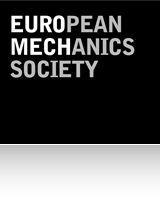525 – Instabilities and transition in three-dimensional flows with rotation
Date:
21 June 2011 – 23 June 2011
Location:
École centrale de Lyon, France
Website:
Chairperson:
Prof. Benoît Pier
Laboratoire de mécanique des fluides et d'acoustique
CNRS-Université de Lyon
École centrale de Lyon
36 avenue Guy-de-Collongue
F-69134 Lyon
France
email: benoit.pier@ec-lyon.fr
Co-chairperson
Prof. Fabien Godeferd
Laboratoire de mécanique des fluides et d'acoustique
CNRS-Université de Lyon
École centrale de Lyon
36 avenue Guy-de-Collongue
F-69134 Lyon
email: fabien.godeferd@ec-lyon.fr
Prof. Nigel Peake
Department of Applied Mathematics and Theoretical Physics
Cambridge University
Centre for Mathematical Sciences,
Wilberforce Road,
Cambridge, CB3 0WA,
UK
email: n.peake@damtp.cam.ac.uk
Shear flows are known to display a variety of spatio-temporal instabilities and complex transition scenarios. The route from a laminar flow to a fully turbulent régime cannot be understood without taking into account three-dimensional effects. Particularly interesting effects are observed in the presence of rotation --- either external, through rotating bodies, or internal, through large-scale vorticity. Recently, our understanding of such flows has been improved by technical advances in analysis and experiment and a vast increase in computing resources. This allows to consider increasingly complex mean flow distortions, in which the additional complexity brought by three-dimensional coupling is approached with different techniques in the communities of hydrodynamic stability and turbulence, which can however be compared and, whenever possible, linked.
By bringing together experts in experimental, numerical and analytical approaches, this colloquium will attempt to clarify the global picture prevailing near transition and to narrow the gap between stability and turbulence analyses. It is expected that the development of modern analytical tools will suggest new experiments, and that novel experimental observations will in turn inspire more theoretical work.
Contributions are expected, among others, from the following topics:
- Three-dimensional boundary layers
- Flows around or inside rotating bodies
- Vortex breakdown
- Spatio-temporal development of perturbations
- Transition scenarios
- Control
- Transient phenomena
- Inhomogenous and anisotropic turbulence
